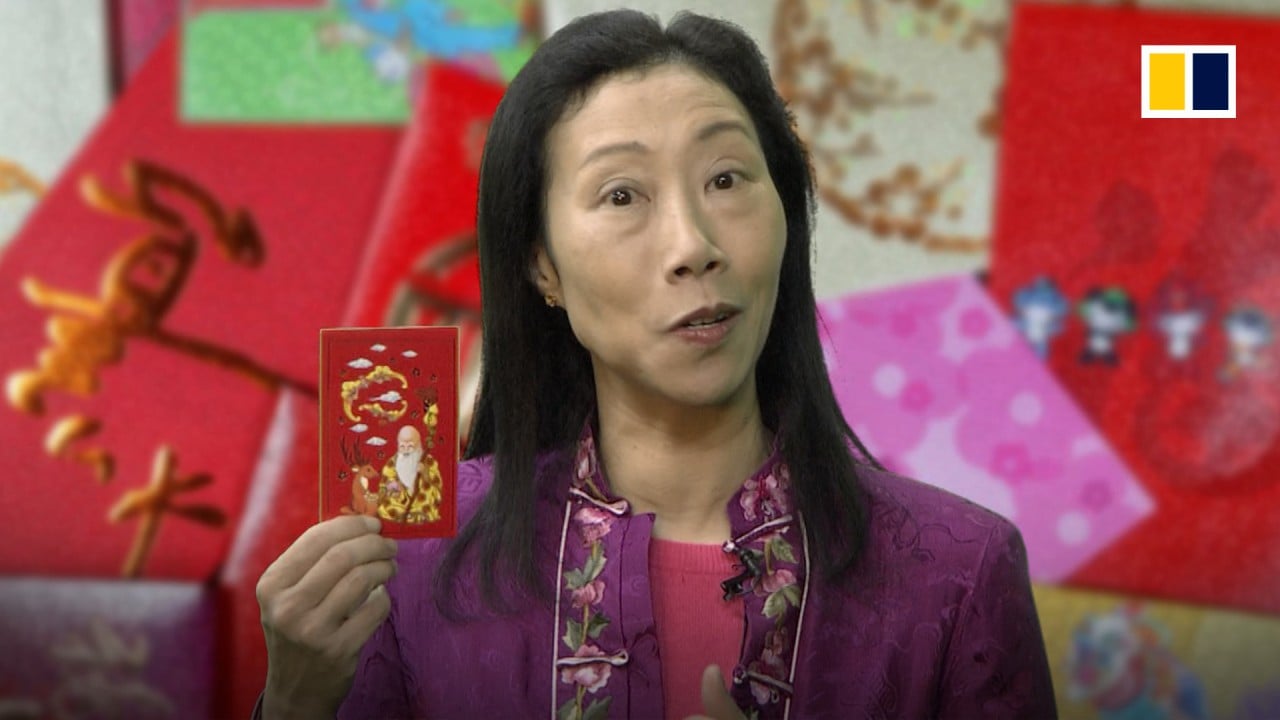
Lunar New Year: how folding red envelopes opens up Chinese cultural traditions
- Lunar New Year is an ideal time for cultural exchange that celebrates Chinese traditions, and one way to do that is making and giving lucky red packets, which also offer a link to the Chinese diaspora
After the presentation, colleagues told me how much they enjoyed it and connected this holiday with Thanksgiving, where family gatherings are front and centre. As we are in an election year in the US, it can’t hurt to further uplift the wonderful aspects of our culture. The more we share, the more we gain an understanding of our respective histories and celebrate our uniqueness and similarities.
My father recalled looking forward to receiving ya sui qian, or “suppressing age money”, from his grandparents during his boyhood years in Shanghai. The economy was struggling in China in the 1950s, and Lunar New Year was marked by hearty meals and lucky red envelopes. In keeping with tradition, children would also bai nian – that is, wish their elders a happy new year – and kowtow to show their respect before receiving the red envelopes.
“It’s light, easy to carry, it has a good symbol, it reminds a person of his Chinese cultural roots and it’s very practical,” he said. “You can do whatever you want to do with the money. It was very symbolic of Chinese culture. I enjoy the Chinese culture part because that’s my roots.”
My fiancé and I recently spent a rainy weekend mastering the art of folding red envelopes; the good news is that they came out pretty well. In preparing for the workshop, we discovered that handmade lucky envelopes are not imagined. Origami enthusiasts practise the art form, and DIY envelopes are for craft lovers. Either way, something handmade feels much more heartfelt and thoughtful.
Finally, there is a comfort to keeping with tradition. I recently received a reminder from my aunt, who as a single person has been a long-time recipient of lucky red envelopes. She offered me envelopes from Chase Bank, telling me, “You are not married, no need to give out red envelopes.” I will, at least for one more year, be a happy recipient.
Amy Wu is a Chinese-American journalist based in New York and California who writes about cross-cultural issues


